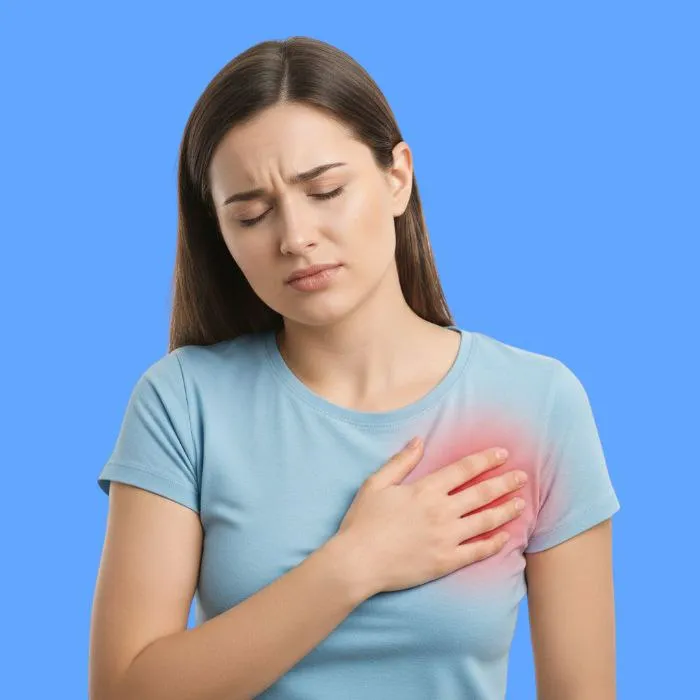What is mastitis?
Mastitis is a health problem that often affects women during breastfeeding. It occurs when bacteria enter the breast tissue, causing redness, pain, and swelling in the affected area.
In some cases, it can also occur in women who are not breastfeeding, especially when the milk ducts are blocked or the immune system is weakened.
What are the causes of mastitis?
There are several common causes that lead to inflammation and swelling of the breast tissue, including:
- Bacteria entering through cracked nipples.
- Milk retention within the ducts.
- Weakened immune system.
- Wearing a tight bra.
- Poor personal hygiene.
What are the common symptoms of mastitis?
A woman with mastitis will exhibit a number of clear signs indicating inflammation, including:
- Severe pain in the breast area.
- Redness and warmth of the skin.
- High body temperature.
- A lump or swelling under the skin.
- A general feeling of fatigue.
When should you see a doctor?
It is recommended to consult a doctor immediately if you notice abnormal symptoms or persistent pain, especially in the following cases:
- Symptoms persist despite home treatment.
- Abnormal nipple discharge.
- Fever lasting more than two days.
- Recurrence of the infection.
- Change in the appearance or color of the skin.
What are the methods for diagnosing mastitis?
The doctor relies on tests to help determine the severity of the infection and the type of infection, such as:
- Clinical breast examination.
- Ultrasound.
- Analysis of samples of the secretions.
- Blood tests to determine the presence of general inflammation.
- Ruling out an abscess or tumor.
What are the methods for treating mastitis?
Treatment of mastitis includes several steps aimed at reducing inflammation and relieving pain, such as:
- Taking appropriate antibiotics.
- Regularly emptying the breast.
- Using warm compresses.
- Getting adequate rest.
- Taking pain relievers when needed.
Is mastitis curable?

Most patients can fully recover from mastitis when the treatment plan is properly followed. Recovery depends on several factors, such as:
- Speed initiation of treatment.
- The patient's adherence to medications.
- The overall health of the immune system.
- The presence of complications such as an abscess.
- Proper care during breastfeeding.
What are the tips for preventing mastitis?
Mastitis can be prevented by adopting simple healthy habits in daily life, such as:
- Breastfeeding regularly from both breasts.
- Cleaning and drying the nipple after each feeding.
- Wearing comfortable cotton clothing.
- Avoiding pressure on the breast.
- Seeing a doctor immediately if any pain occurs.
What are the potential complications of mastitis?
Untreated mastitis can lead to other, more complex health problems, including:
- Formation of an internal abscess in the breast.
- The spread of infection to surrounding tissue.
- Chronic recurrence.
- Premature cessation of breastfeeding.
- Change in the shape or texture of the breast.
Frequently Asked Questions About Mastitis
Is mastitis contagious?
No, it is not contagious.
Can breastfeeding continue during mastitis?
Yes, and it is recommended to relieve congestion.
Does mastitis recur after healing?
It may recur if the ducts become blocked again.
Does mastitis cause breast cancer?
No, but it shares some symptoms.
Article Summary
Mastitis is easily treatable if treated early.
Good hygiene, regular breastfeeding, and rest are essential factors for prevention and recovery.
It is important to consult a doctor as soon as symptoms appear to avoid complications and ensure a speedy and safe recovery.